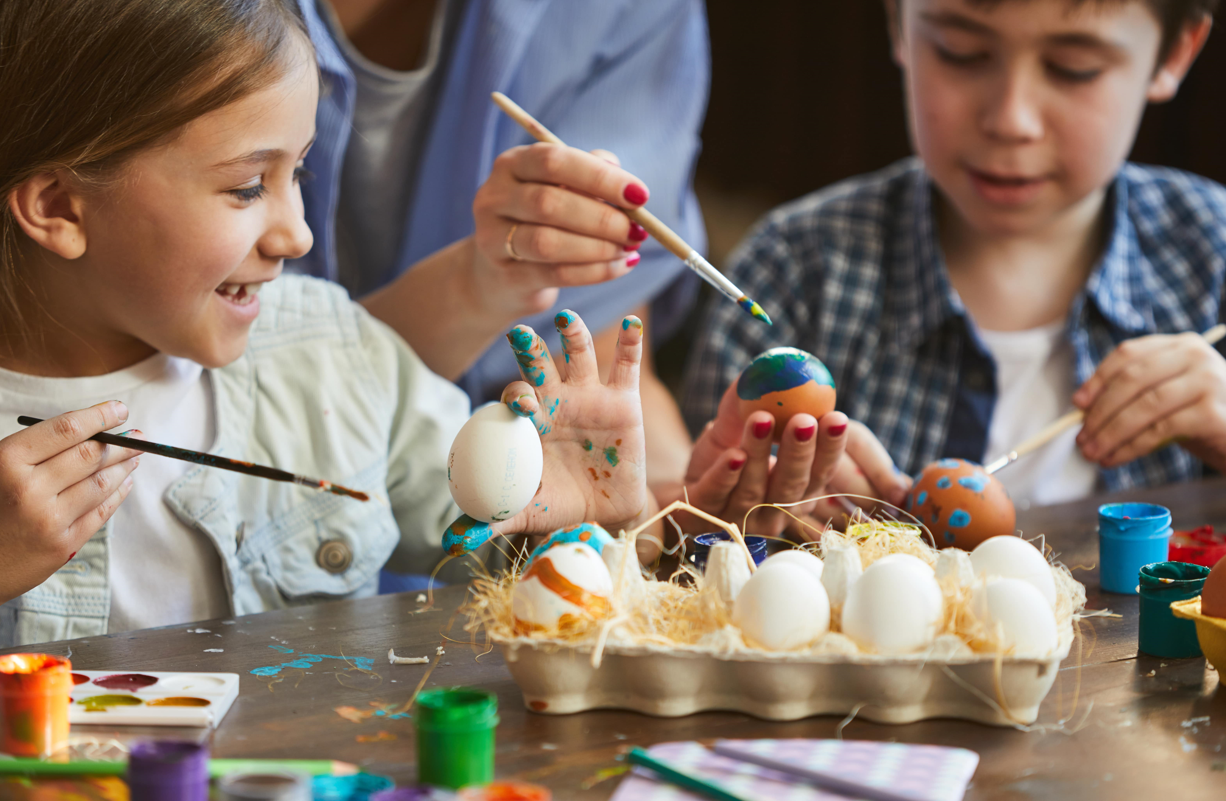Jak zintegrować klasę? Przykłady aktywności w różnym wieku - praktyczne porady od pedagoga

Zintegrowana klasa to przestrzeń, w której różnorodność staje się siłą napędową wspólnego rozwoju. W dzisiejszych czasach, kiedy różnice kulturowe, społeczne i osobiste stają się coraz bardziej widoczne, umiejętność tworzenia jedności wśród uczniów jest niezwykle cenna. W tym artykule, zanurzymy się w świat praktycznych porad, które pomogą nauczycielom w skutecznym zintegrowaniu klasy, niezależnie od wieku uczniów.
Jak zintegrować klasę?
Integracja klasy to nie lada wyzwanie, co więcej, czasami może trwać jeden dzień, a w innym przypadku nawet cały semestr. Warto pamiętać, że pod swoją opieką mamy indywidualne jednostki, które już w pierwszych dniach szkoły zaczynają kształtować swój charakter i pełną osobowość.
WYJDŹCIE Z ŁAWEK, USIĄDŹCIE NA PODŁODZE
Krok pierwszy w procesie integracji to stworzenie przestrzeni, która sprzyja otwartej komunikacji i bezpośredniemu kontaktowi wzrokowemu między uczniami. Zamiast tradycyjnego siedzenia w ławkach, zachęć dzieci do usadzenia się w kółku. Taki układ pozwala każdemu uczniowi widzieć twarze swoich kolegów zamiast ich pleców. To prosty sposób, który już na początku tworzy atmosferę równości i bliskości w klasie.
Usadzenie uczniów w kółku ma wiele zalet. Przede wszystkim, umożliwia to bezpośredni kontakt wzrokowy między nimi, co może prowadzić do lepszej komunikacji i zrozumienia. Ponadto, taka konfiguracja przestrzeni sprzyja interakcji między uczniami, a także może pomóc w rozbijaniu bariery struktury hierarchicznej w klasie.
Kolejnym pozytywnym aspektem jest to, że uczniowie widzą się nawzajem jako partnerów, a nie konkurentów. To sprzyja budowaniu więzi, empatii i współpracy. Dzieci mogą się poczuć bardziej swobodnie w wyrażaniu swoich opinii i uczestniczeniu w dyskusjach.
To tylko pierwszy mały krok, ale może mieć ogromne znaczenie dla atmosfery w klasie. To właśnie w takiej przestrzeni uczniowie mogą poczuć się bardziej zintegrowani i zachęceni do współpracy oraz wspólnego rozwoju.
💡 WSKAZÓWKA: Jeśli częścią Twoich zabaw integracyjnych będą zadania w mniejszych grupach unikaj dzielenia dzieci za pomocą wyboru kilku z nich do dzielenia reszty grupy. Może to znacząco wpłynąć na dzieci, które zostały wybrane na końcu, lub nie zostały wybrane w ogóle. Poza tym, uczniowie wybiorą w ten sposób swoich najbliższych kolegów, co niekorzystnie wpłynie na integrację z resztą grupy.
W zamian za to wykorzystaj np. metodę odliczania, od 1 do 2, 3 czy 4 w zależności od ilości osób w klasie. Jeśli pracujesz z najmłodszą grupą, która nie potrafi jeszcze liczyć możesz przygotować losy np. wycięte kwiatuszki, chmurki, słoneczka itp. i poprosić swoje pociechy o wylosowanie jednej karteczki. Dzieci już przy szukaniu swojej grupy zaczynają się poznawać i budować relację. Pamiętaj, aby co jakiś czas mieszać grupy tak, aby cała klasa miała możliwość ze sobą współpracować. Obserwuj kto pracował z kim w poszczególnych zadaniach i na bieżąco zmieniaj układ grup.
❗WAŻNE: Dzieci już od najmłodszych lat przejawiają różne cechy, takie jak bycie liderem/przywódcą, siewcą pomysłów czy człowiekiem grupy. Twoim zadaniem jest, aby obserwować grupę i monitorować jakie dziecko przejawia dane cechy. Jeśli zauważysz, że w jednej z grup są dwie jednostki przejawiające cechy przywódcze, a w drugiej takiego dziecka w ogóle nie ma postaraj się subtelnie rozdzielić grupę by uniknąć starcia dwóch przywódczych jednostek.

Jakie zabawy integrują klasę?
Zadania w mniejszych grupach pozwalają poznać się lepiej wybranym jednostkom. Na samym początku zajęć integracyjnych warto pracować całą grupą. Poniżej przedstawię kilka praktycznych zadań, które świetnie wpływają na integrację całego zespołu klasowego.
🎲“USTAWIANKI”
Ćwiczenie “Ustawianki” daje Ci ogromne pole kreatywności. Polega ono na ustawianie osób od przeróżnej kolejności. Kolejnością może być:
• wzrost (chociaż w przypadku małych dzieci może być to miejsce do konfliktu, także z tym punktem byłabym szczególnie ostrożna),
• odległość od szkoły do domu
• odcień oczu, od najjaśniejszego do najciemniejszego (bardzo ciekawa opcja, bo przecież nic tak nie integruje jak patrzenie się sobie w oczy ☺️)
• długość włosów
… i wiele innych, ciekawych opcji, które automatycznie wpadają do głowy gdy obserwujesz swoją grupę.
🎲“POWTÓRZ MOJE IMIĘ”
Ćwiczenie choć nieco czasochłonne, to rewelacyjne pod względem zapoznania i zacieśnienia relacji.
Usadź swoją grupę w kółku i poproś o podanie swojego imienia po kolei. Gdy wszystkie dzieci wymienią swoje imię poproś o kolejno wymienienie swojego imienia, oraz imienia kolegi/koleżanki obok. Zadanie może wydawać się trudne, lecz na bazie własnego doświadczenia wiem, że nawet najmłodsze pociechy są w stanie je wykonać.
REGULAMIN
Całą grupą warto również stworzyć regulamin klasowy. Ważne, aby regulamin był kreatywny, kolorowy i przede wszystkim ciekawy dla całej grupy. Stworzonego przez siebie “dokumentu” nie musicie nazywać “regulaminem”. Możecie użyć własnej, wymyślonej przez całą grupę nazwy.
Przykładowe punkty regulaminu to:
• Nie przerywamy sobie nawzajem
• Szanujemy się
• Wspieramy się
• Respektujemy swoje zdanie i opinię
To tylko parę propozycji, natomiast najważniejsze jest, aby to Twoi uczniowie wymyślili zasady, które będą panować w klasie. Posiadanie regulaminu i stosowanie się do postanowień korzystnie wpływa na dalszy rozwój dziecka. Kształtuje to swobodne podejście do norm i wymogów w dalszym życiu.
💡 WSKAZÓWKA: Pamiętaj, aby regulamin w większej części zawierał punkty, które nie będą zaczynać się od słowa “NIE”. Zamiast “Nie można mówić bez podniesienia ręki” napiszcie “Podnosimy rękę gdy chcemy coś powiedzieć”. Na pierwszy rzut oka widać, że jest to bardziej łagodne i przystępne dla młodych osób.
🤔PAMIĘTAJ: Aby na pierwszym zebraniu z rodzicami omówić utworzony przez ich pociechy regulamin. Ważne, aby rodzice poznali panujące w klasie zasady i rozmawiali o nich ze swoimi dziećmi. Pokazanie punktów, które przygotowali Twoi uczniowie zobrazuje rodzicom na jakim etapie rozwoju psychospołecznego znajdują się ich młodsze pociechy.

Jak zbudować zgraną klasę?
Praca, konsekwencja i dużo cierpliwości. Ważne, aby zajęcia integracyjne powtarzać cyklicznie. Nie sztuką jest przygotować jeden warsztat, a konsekwencja w działaniu i widoczność efektów naszej pracy. Jeśli widzisz, że mimo zajęć integracyjnych w klasie pojawiają się konflikty lub podziały grupowe - reaguj natychmiast. Obserwacja całej grupy i dopasowywanie działań mających na celu zbudowanie zgranego zespołu to klucz do sukcesu. Jeśli widzisz, że klasa sprzeciwiła się przeciwko jednej osobie musisz koniecznie zacząć interweniować. Pamiętaj, że pierwsze lata edukacji szkolnej są kluczowe w dalszej części życia młodego człowieka. Jeśli dziecko już w pierwszych latach swojego życia było gnębione lub nielubiane przez szkolnych rówieśników, może mieć to znaczący wpływ na jego relacje w dalszym etapie życia. To samo dotyczy dzieci, które bezkarnie poniżały, śmiały się czy odtrącały jednostkę.
Budowanie zgranej klasy wiąże się również z omawianiem bieżących sytuacji i problemów.
🌐SPOŁECZNOŚĆ: W pedagogice resocjalizacyjnej bardzo często pojawiają się zajęcia ze społeczności. Na koniec tygodnia, na forum grupy omawiane wszystkie kluczowe sytuacje z całego tygodnia. Wychowankowie mają chwilę na podzielenie się z resztą grupy opinią na temat danego tygodnia, mają szansę na rozwiązanie konfliktu lub pochwalenia się przed resztą grupy swoim lub czyimś sukcesem minionego tygodnia. Twoim zadaniem podczas zajęć ze społeczności jest monitorowanie reakcji, moderowanie dyskusji i nie doprowadzenia do eskalacji ewentualnego konfliktu. Przed wprowadzeniem zajęć ze społeczności pamiętaj, aby omówić je z rodzicami i spytać o zgodę w ich wykonywaniu. Przedstaw opiekunom cel, efekty oraz przebieg takich zajęć.
🤔PAMIĘTAJ: Bycie dobrym pedagogiem to klucz do wychowania młodych osób. Warto podkreślić, że zwłaszcza na etapie wykształcenia wczesnoszkolnego to TY spędzasz z każdym ze swoich uczniów najwięcej czasu w ciągu dnia. Dlatego ważne jest, aby swoich podopiecznych obserwować, dostosowywać potrzeby, wymagania i materiał pod daną jednostkę. Nauczyciel nie może być stronniczy. Z doświadczenia wiem, że niejednokrotnie praca z np. “uparciuchem” jest bardzo ciężka. Natomiast nigdy nie możesz kierować się sympatią czy antypatią do danego ucznia.
💡 WSKAZÓWKA: Jak już wspomniałam, to Ty spędzasz większość dnia z pociechami rodziców, którzy powierzają Ci opiekę nad nimi. Dlatego szczególnie istotny jest bieżący kontakt i feedback odnośnie postępów w nauce i rozwoju dziecka. Jeśli widzisz, że pojawiają się sytuacje alarmowe natychmiast informuj o tym opiekuna prawnego.
W jaki sposób zintegrować zespół klasowy?
Jak już wspomniałam najważniejsza w integracji jest cykliczność i systematyczność. To od Ciebie zależy jak często takie zajęcia będą pojawiać się w Twojej klasie. Jeśli widzisz, że Twoja klasa jest zgrana i nie pojawiają się w niej konflikty możesz prowadzić takie zajęcia w mniejszym stopniu. Pamiętaj, że w momencie, kiedy pojawi się chociażby najmniejszy konflikt dzielący zespół klasowy zajęcia integracyjne muszą się odbyć najszybciej jak to możliwe.

Jak najlepiej rozwiązywać konflikty w grupie?
W Twojej grupie pojawił się konflikt. Co teraz? Przygotuj warsztaty tematyczne dotyczące konfliktu. Porozmawiaj z uczniami o emocjach przeprowadzając debatę czy burzę mózgów. Poproś swoich wychowanków o opowiedzeniu o emocjach, które pojawiają się w ich codziennym życiu. Jeśli pracujesz ze starszą grupą, która potrafi pisać wyznacz jedną osobę (najlepiej tą, która zgłosi się sama) do zapisywania emocji na tablicy. Jeśli Twoja grupa nie potrafi jeszcze pisać przygotuj tzw. “minki” z papieru i poproś jedną osobę do przywieszania na tablicy.
Przed zajęciami przygotuj konspekt dydaktyczny, w którym umieścisz cele nauczania. Na końcu warsztatów, na podstawie wyznaczonych przez Ciebie celi możesz wyciągnąć ze swoimi wychowankami wnioski i podsumować całą pracę. Konspekty są również istotnie ważne w kwestii przedstawienia rodzicom pracy, jaką wkładasz w wychowanie ich pociech.
Ćwiczenia pomocne przy konflikcie
🎲“Co mnie złości?”
Ćwiczenie “co mnie złości” ma na celu oddanie głosu Twoim wychowankom i danie możliwości opowiedzenia o sobie. Podczas tego ćwiczenia aktywnie współpracuj z wychowankami, zadawaj pytania. Pamiętaj, aby w tym zadaniu nie naciskać. Jeśli jakieś dziecko nie chce się wypowiedzieć, pozwól mu na to. Żadne zadanie nie może stać się przymusem i warto pamiętać, że niektórzy otwierają się wolniej.
🎲“Jak sobie radzisz ze złością?”
To ćwiczenie jest niejako nawiązaniem do poprzedniego. Tutaj również pojawia się element burzy mózgów. Daje Ci to też szansę na poznanie stopnia agresji Twoich wychowanków. Jeśli w odpowiedziach pojawią się takie odpowiedzi jak “zaciskam ręce, zęby, płaczę, nie panuję nad sobą, krzyczę” to czas, aby zacząć bacznie przyglądać się jednostkom, u których pojawiają się takie reakcje.
Podczas tego ćwiczenia Twoim zadaniem jest, aby objaśnić, że złość to emocja jak każda inna i da się z nią żyć bez złych reakcji. Podkreśl, że ważne jest, aby rozmawiać o tym co nas zezłościło, dzielić się na bieżąco frustrującymi nas tematami i rozwiązywać pojawiający się konflikt.
🎲“EMOCJE - KALAMBURY”
Przygotuj losy takie jak: radość, zaskoczenie, duma, spokój, ciekawość, zachwyt, zaduma, akceptacja, zaufanie, czujność, złość i smutek. Reszta zabawy działa na klasycznych metodach zabawy w kalambury. Jedna osoba pokazuje wylosowaną przez siebie emocję, reszta zaś zgaduje odpowiedź.
Zauważ, że: w tej liście w większości pojawiają się te dobre emocje. W tym zadaniu, jak i w całych warsztatach chodzi o pokazanie większości pozytywnych emocji. Gdyby cała zabawa polegała na złych emocjach i pokazywaniu ich mogłoby to skutkować utrwaleniem w świadomości dziecka faktu, że złe emocje są tylko zabawą. Dlatego warto tę kolejność odwrócić i pozostawić dobre wspomnienia przy pozytywnych emocjach.
🎲“Jestem, czuję, będę”
Na sam koniec warsztatów o emocjach warto wykonać jeszcze jedno ćwiczenie. Aby podsumować zajęcia i sprawdzić czy cele edukacyjne zostały spełnione przeprowadź ze swoimi uczniami pogadankę.
Po dzisiejszej lekcji:
Jestem…
Czuję…
Będę…
Twoi uczniowie podzielą się z Tobą odczuciami, uwagami i dalszymi planami w zakresie emocji i odczuć życia codziennego. Poznasz ich jeszcze bardziej, aby w dalszym etapie monitorować rozwój i postępy dydaktyczne.

Jakie to są zabawy tematyczne?
Nic tak nie łączy jak dobra zabawa i odczucia związane z celebrowaniem ważnych dni w roku. Dni takich jak dzień wiosny, jesieni, zimy czy dzień mamy, taty, dziecka nie muszę nawet przedstawiać. Ale oprócz takich klasycznych, wszystkim znanych dni jest jeszcze wiele ciekawych opcji jak:
• Światowy Dzień Brody
• Dzień Dobroczynności
• Światowy Dzień Pozyskiwania Talentów
• Dzień Dobrych Wiadomości
• Dzień Marzyciela
To tylko niewielka część propozycji, których na przestrzeni całego roku jest bardzo dużo. Na podstawie tych świąt czy dni możesz przygotować naprawdę ciekawe i kreatywne warsztaty, które zintegrują i wzmocnią grupę oraz przyniosą wiele dobrych wspomnień.
Podsumowując, proces integracji w klasie to ważny krok w budowaniu harmonijnej i sprzyjającej nauce atmosfery. Rozpoczynając od prostych aktywności, takich jak usadzenie uczniów w kółku, można stworzyć solidne fundamenty dla współpracy i wzajemnego zrozumienia. Integracja nie tylko sprzyja lepszemu samopoczuciu uczniów, ale także wpływa pozytywnie na ich wyniki w nauce i rozwój społeczny.
Dając dzieciom możliwość bezpośredniego kontaktu wzrokowego i otwartej komunikacji, tworzymy przestrzeń sprzyjającą wspólnemu odkrywaniu, wymianie pomysłów i rozwijaniu umiejętności społecznych. To inwestycja w ich przyszłość, umiejętność porozumiewania się i współpracy będą bowiem kluczowymi umiejętnościami w dorosłym życiu.
🤔PAMIĘTAJ: integracja to proces ciągły i wymagający zaangażowania zarówno Twojego, jak i uczniów. Przyjęcie otwartej postawy, wsparcie dla różnorodności i promowanie wspólnych działań to kluczowe elementy w budowaniu zintegrowanej klasy. Dzięki takim wysiłkom możemy stworzyć przestrzeń, w której każde dziecko czuje się docenione i akceptowane, co z kolei przekłada się na pozytywną atmosferę oraz efektywną naukę.
Przeczytaj także:
- Wyprawka szkolna: Co powinno znaleźć się w plecaku Twojego dziecka?
- Czy da się samodzielnie nauczyć się języka hiszpańskiego?
- Jak zachęcić dziecko i młodzież do czytania

